6 Ways Computer Vision is Transforming Retail
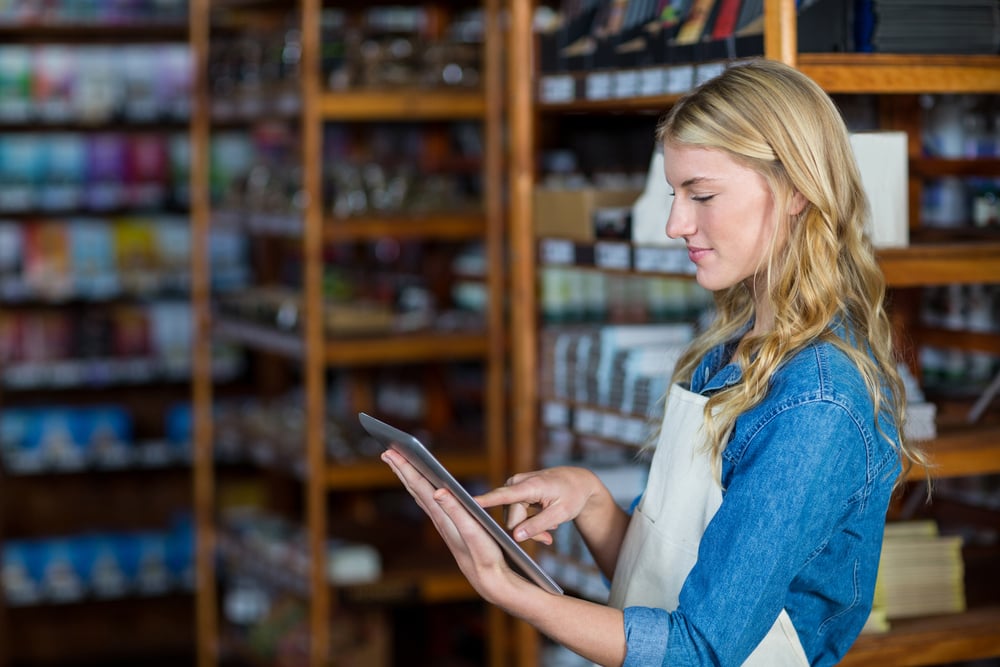
Computer vision captures this intricate dance between consumers and their environment, transforming raw data into actionable insights. It's akin to granting retailers a sixth sense, one rooted in empirical data rather than gut instinct.
In brief, computer vision is a specialized field within the AI domain that enables machines to interpret and make decisions based on visual multidimensional datasets. This technology, by emulating human visual perception, has the capability to capture, process, and analyze images and videos, extracting valuable information such as emotional states, facial expressions, and body movements. These aspects serve as compelling datasets for marketing teams and sellers.
For decision-makers in the retail sector, understanding the nuances of computer vision technology is not optional — it's an imperative. From enabling frictionless shopping experiences and automated inventory management to enhancing loss prevention and implementing hyper-personalized marketing, computer vision is a vital linchpin in a redefined retail environment.

Source: FreePic
1. Frictionless shopping experience
Both consumers and retailers seek a frictionless, seamless shopping experience, and computer vision is the technological foundation that makes this possible. Traditional checkout systems are rife with inconveniences, especially long queues, manual scanning, and the occasional human error. Computer vision removes these bottlenecks, enabling automated, cashierless stores that redefine retail efficiency with predictability and increased accuracy.
Take Amazon Go as a prime example. The tech giant leverages computer vision alongside sensor fusion and deep learning algorithms to create a 'Just Walk Out' shopping experience. Once a customer enters the store and scans their smartphone, they're free to grab items off the shelves.
Żabka Nano offers a similar experience in Europe. Their autonomous stores use computer vision for real-time product recognition, supported by cloud event processing and IoT-connected devices that coordinate doors, payments, and in-store systems. Customers simply enter, pick up what they need, and walk out—while the system automatically identifies items and completes checkout without any human intervention.

Cameras with dedicated edge computing solutions equipped with computer vision technology meticulously track these actions, adding items to their virtual cart as they shop. Upon exiting the store, their Amazon account is instantly billed, ensuring a seamless and joyful customer experience without queues or delays.
It's not just industry giants reaping the rewards; smaller retailers are also jumping on the opportunity. Computer vision companies offer similar technologies that retrofit existing stores with overhead cameras to facilitate automated checkouts.
By mitigating the hassles traditionally associated with shopping, computer vision is at the forefront of shaping a new era in retail — one that prioritizes speed, accuracy, and, above all, customer convenience.
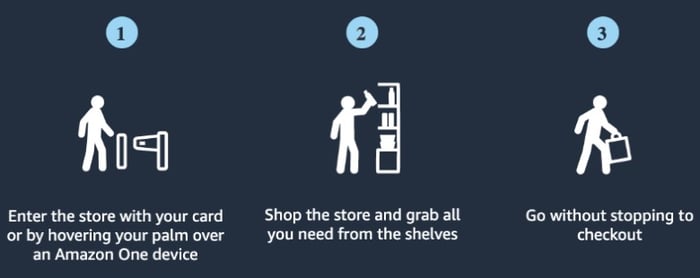
Source: Just Walk Out
2. Autonomous inventory management
With computer vision, retailers can now achieve real-time, automated tracking of every item on their shelves. The first touchpoint is shelf monitoring. Using computer vision algorithms, smart cameras continuously scan the retail environment, instantly flagging out-of-stock items or misplaced products.
Some retail giants have employed shelf-scanning robots equipped with computer vision to roam the aisles, identifying gaps or inconsistencies on the shelves. This real-time information enables immediate restocking, which not only mitigates revenue loss but also enhances customer satisfaction by ensuring product availability.
In a 2021 pilot project by grocery chain Schnuck Markets, store robots detected 14 times as many addressable out-of-stock items as hand scans, lowering out-of-stock incidences by 20-30%. Schnucks began testing its store robot, called Tally, in 2017, where it roams shop aisles up to three times a day, collecting on-shelf data such as inventory position, price accuracy, and promotional execution. This solution for in-store product auditing is entirely autonomous, effectively addressing the most prevalent human errors through automatic system rules.
Quality control
Similarly, computer vision aids in quality control by detecting damaged or expired products. Specialized cameras can read packaging and expiration dates, removing the need for manual checks, which are both time-consuming and prone to error.
By preemptively identifying and removing such products, retailers minimize the risk of customer dissatisfaction and potential liabilities. In dealing with outdated products, certain solutions empower retailers to reject deliveries of items with a limited shelf life, ensuring these products never reach the shelves and assuring customer safety regarding health concerns.
Coupled with predictive analytics, stores can analyze historical and real-time data on customer behavior, seasonal trends, and even external factors like weather. With this technology, stores can forecast retail demand with startling accuracy. This enables smarter procurement strategies, reducing both overstock and stockout situations.
For instance, within the realm of franchise businesses, this represents a significant optimization. Pallets sourced from local warehouses will be efficiently routed to optimal destinations, incorporating eco-friendly practices to reduce carbon emissions from vehicles.

Source: FreePic
3. Streamlined store operations
Computer vision technology lends itself to multiple facets of retail operations, significantly reducing the need for extensive human staffing. While inventory management focuses on the supply chain's integrity, broader store management also benefits immensely from computer vision technology.
One pivotal aspect is optimizing the customer journey within the physical space, from entry to exit. Retail heat map analytics use computer vision cameras to track customer movements, identifying high-traffic areas, dead zones, and bottlenecks. Retailers like Tesco are using heat maps to adjust their store layouts.
For example, if a promotional endcap isn't drawing the anticipated crowd, the heat map's real-time data can prompt an immediate pivot, allowing for signage to be adjusted or products to be swapped out.
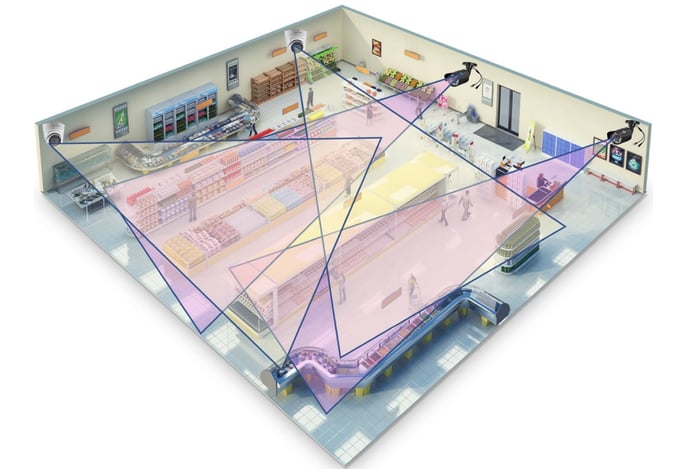
Source: Artificial Intelligence Review, When AI meets store layout design: a review
Another application is in queue management. Computer vision-powered cameras can predict queue lengths and waiting times, enabling stores to allocate staff more efficiently. Some retail and fast dining outlets are using this technology to assess queue lengths and dynamically adjust staffing at their registers.
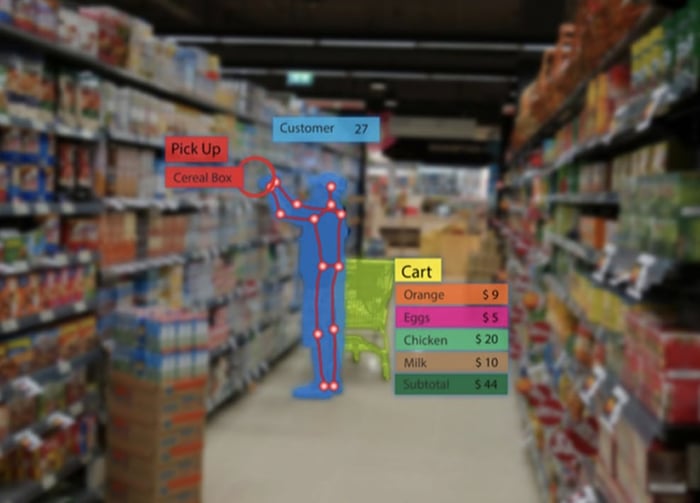
Source: Artificial Intelligence Review, When AI meets store layout design: a review
Then there's task automation for staff beyond inventory management. Robots equipped with computer vision can execute a myriad of store upkeep activities, such as cleaning floors, checking temperatures in refrigerated sections, or even verifying that store signage matches promotional offers. These subjects pertain to the realm of the Internet of Things (IoT), wherein networks of sensors generate data in diverse environments.
Finally, let's touch on safety. Especially in the post-pandemic world, monitoring occupancy levels has become a crucial operational facet. Computer vision cameras at store entrances and exits can count customers in real-time, ensuring compliance with local occupancy regulations.
Furthermore, machine learning algorithms linked to computer vision data provide additional layers of customer insights. Establishments have started employing these systems to analyze and manage store density.
4. Loss prevention and security
Brick-and-mortar retail stores face a constant battle against theft and fraud, costing billions annually. Here, machine learning adds a potent layer of security that goes beyond the capabilities of traditional surveillance systems. Machine learning technology not only monitors but also analyzes and predicts behavior, setting it apart as an invaluable asset in loss prevention strategies.
Walmart, for instance, utilizes computer vision-powered cameras to identify potential shoplifting.These intelligent systems can recognize suspicious behavior patterns, like lingering in an aisle without making a purchase or frequenting blind spots within the store. The technology also flags unscanned items at self-checkout lanes, providing an additional layer of accountability and theft deterrence.
Notably, these computer vision systems are perpetually self-improving. They learn from every interaction, honing their predictive accuracy over time. This self-iterative nature not only makes the technology more robust but also minimizes false positives, thereby reducing the likelihood that innocent customers are wrongfully accused.
5. Virtual try-on experiences with augmented reality
Computer vision dovetails with augmented reality (AR) to create a transformative shopping experience known as virtual try-on. This synergy is particularly vital in sectors such as fashion, cosmetics, and eyewear, where fit and aesthetics are paramount. Retailers, both online and in-store, are harnessing these technologies to reduce friction in the consumer decision-making process while delivering an enjoyable shopping experience.
Let's consider Warby Parker, the eyewear retailer.Their app employs computer vision and AR to map the user's face and overlay a range of eyeglass frames virtually. The result? A strikingly realistic image of how various frames would appear, thereby eliminating the guesswork and giving customers the confidence to make a purchase online.
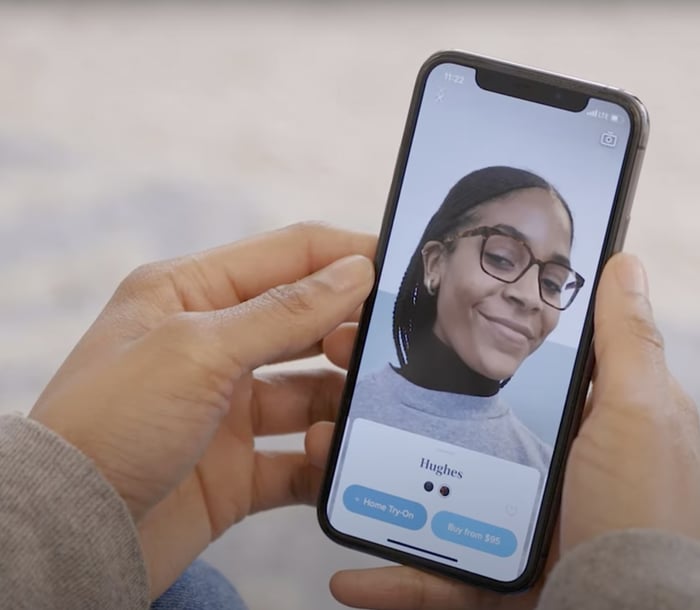
Source: Warby Parker
In cosmetics, brands like L’Oréal use AR-enabled smart mirrors or smartphone apps to allow customers to virtually "apply" makeup. Whether it’s a new shade of lipstick or an eye shadow palette, the software taps into computer vision algorithms to identify facial features accurately and render realistic results.
L'Oréal’s AR makeup experiences, since their launch in 2019, have shown promising results, doubling website engagement time and tripling conversion.
Similarly, smart fitting rooms equipped with computer vision technology can recognize the items brought in for trial. They can then display other available sizes, colors, or even suggest complementary items through AI-powered fashion recommendation systems, effectively acting as a personal stylist.
Beyond individual use, these technologies prove invaluable in cutting down returns, a long-standing pain point in the retail sector. By enhancing the accuracy of online shopping, computer vision and AR effectively reduce the likelihood of a product mismatch, thereby decreasing return rates and associated costs.
6. Personalized in-store marketing
Leveraging an array of sensors and cameras, computer vision collects intricate data about customer behavior and shopping patterns. By tracking which products customers pick up, examine, and eventually purchase or put back, stores can create detailed consumer profiles on the fly.
Integration with smart devices adds another layer of personalization to this process. The ability to link autonomous store apps with personal technology like smartphones or smartwatches facilitates a seamless connection between the physical store and the customer.
This integration can offer features such as shopping list synchronization, access to nutritional information, and even augmented reality experiences, enriching the overall shopping journey. Imagine walking into a grocery store and having your app, synced to your smart device, guide you to products that align with your specific health needs or dietary restrictions.
Products can be suggested either via a mobile app in real-time as the customer shops or through personalized promotions and coupons sent post-visit. Retailers can send targeted offers based on a customer's in-store journey, substantially increasing the chances of conversion. By treating each customer as a unique individual with distinct tastes and preferences, retailers foster a sense of exclusivity and belonging, which is invaluable in creating a loyal customer base.
Ignoring computer vision is no longer an option
Deploying computer vision is not merely about capturing more data. It's about capturing the right data and converting it into actionable insights towards multiple challenges. On one hand, computer vision helps streamline operations and automate mundane tasks, freeing up human resources for value-added activities. On the other hand, it allows retailers to elevate and personalize customer experiences in unprecedented ways.
As computer vision continues to evolve and democratize, late adopters will find it increasingly difficult to catch up. The technology's self-iterative nature means it gets better over time, widening the gap between early adopters and traditionalists. Retail leaders must move beyond merely understanding this technology to investing in it, experimenting with its capabilities, and embracing its transformative potential.



